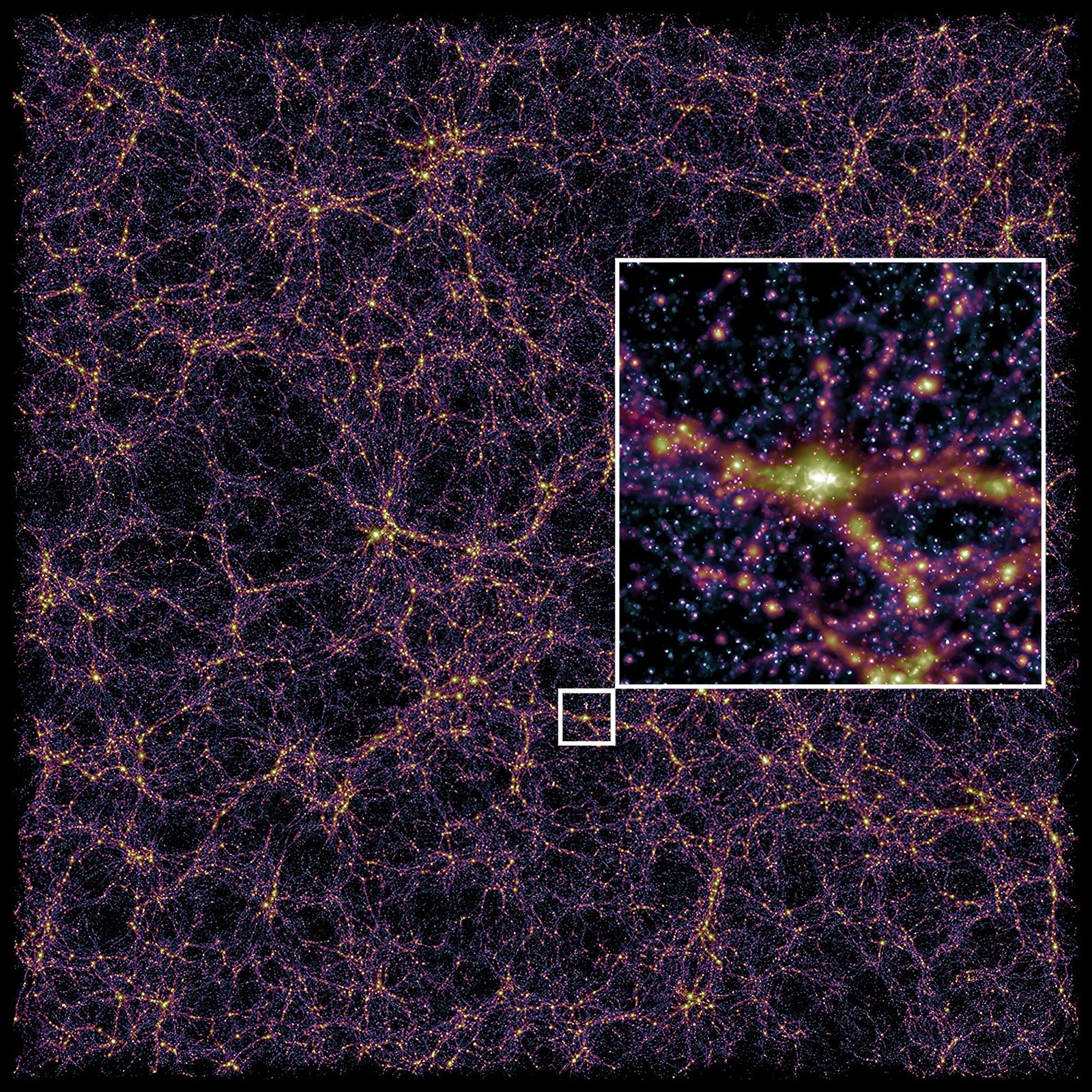The Construction Of China's Space-Based Supercomputer: A Detailed Look

Table of Contents
Technological Challenges in Building a Space-Based Supercomputer
Building a supercomputer that can function effectively in the harsh environment of space presents numerous technological hurdles. The extreme conditions of space necessitate innovative solutions in several key areas.
Radiation Hardening and Space-Grade Components
Space-based systems face constant bombardment by cosmic rays and solar radiation. This necessitates the use of radiation-hardened components capable of withstanding these extreme conditions.
- Extreme Environments: Components must endure extreme temperature fluctuations, high vacuum, and intense radiation, unlike those found in terrestrial supercomputers.
- Miniaturization: Powerful processors and memory need to be miniaturized significantly to fit within the constraints of space-based platforms. This requires advanced microelectronics and packaging technologies.
- Radiation Shielding: Specialized materials and techniques are crucial for shielding sensitive electronics from radiation damage. This includes using radiation-hardened integrated circuits (RHICs) and employing protective layers and coatings.
- Lessons from Past Missions: Challenges faced in previous space missions, such as the degradation of electronic components due to radiation, provide valuable lessons learned for designing a more resilient space-based supercomputer. Analyzing the performance of previous satellite-based computing systems is essential.
Power and Thermal Management in Space
Generating and managing power in space poses a significant challenge. The lack of readily available power sources necessitates efficient energy generation and thermal management systems.
- Power Generation: Options include solar panels, which are susceptible to reduced efficiency due to solar flares and eclipses, and radioisotope thermoelectric generators (RTGs), which offer a reliable but less efficient power source.
- Efficient Cooling: Supercomputers generate considerable heat. Effective cooling mechanisms are crucial to prevent overheating and component failure. Passive cooling techniques, like heat pipes and radiators, and active cooling using specialized refrigerants are essential considerations.
- Power Limitations: The available power in space is limited. Therefore, the design of China's space-based supercomputer must prioritize energy efficiency in all aspects of its operation.
- Advanced Thermal Management Systems: Innovative and robust thermal management systems, including advanced heat exchangers and insulation materials, are needed to maintain optimal operating temperatures.
Data Transmission and Communication from Space
Transmitting massive amounts of data from a space-based supercomputer to Earth presents considerable difficulties. Bandwidth limitations and signal attenuation necessitate sophisticated communication technologies.
- High-Bandwidth Communication: Laser communication systems offer higher bandwidth than traditional radio frequency communication, but face challenges related to atmospheric interference and pointing accuracy.
- Latency Issues: The distance between a space-based supercomputer and Earth introduces significant latency. Strategies to minimize latency are critical for real-time applications.
- Reliable Communication Links: Maintaining a stable and reliable communication link is paramount. Redundancy and error correction techniques are vital for ensuring uninterrupted data transmission.
- Advanced Satellite Constellations: Utilizing constellations of satellites to relay data can enhance overall bandwidth and reduce reliance on single points of failure. Ground-based receiver networks also play a crucial role in data reception and processing.
Strategic Advantages of a Space-Based Supercomputer for China
The successful development of a space-based supercomputer would provide China with significant strategic advantages across various sectors.
Enhanced Earth Observation and Environmental Monitoring
A space-based supercomputer can revolutionize Earth observation and environmental monitoring.
- Improved Weather Forecasting: Real-time data processing enables more accurate and timely weather forecasts, improving disaster preparedness.
- Climate Change Modeling: High-resolution data and sophisticated simulations can lead to a better understanding of climate change impacts and aid in developing mitigation strategies.
- Disaster Prediction: Enhanced data analysis improves the prediction and response to natural disasters, such as earthquakes, floods, and wildfires.
- Resource Management: High-resolution satellite imagery aids in effective mapping and management of natural resources, including land use, forestry, and agriculture.
Advancement in Scientific Research and Exploration
The computational power of a space-based supercomputer would greatly benefit scientific research and space exploration.
- Astronomy and Astrophysics: Advanced simulations and data analysis can unlock new discoveries in astronomy, astrophysics, and cosmology.
- Complex Simulations: The supercomputer can perform complex simulations of astrophysical phenomena, providing insights into the origins and evolution of the universe.
- GPS and Navigation: The system could enhance GPS technology and satellite navigation systems.
- Fundamental Physics Research: Contributions to fundamental physics and other scientific disciplines are expected through advanced data analysis capabilities.
Military and National Security Applications
The potential military and national security applications of a space-based supercomputer are significant, although ethically complex.
- Surveillance and Intelligence: Enhanced surveillance capabilities, particularly in remote or contested regions.
- Missile Defense Systems: Real-time data processing for improved missile defense systems.
- Secure Communication: Secure and resilient communication links, vital for military operations.
- Ethical Considerations: The potential for misuse and the importance of responsible development and application are crucial considerations.
Future Prospects and Implications of China's Space-Based Supercomputer
The successful completion of China's space-based supercomputer will significantly impact global technological competition and various sectors.
- Timeline and Capabilities: The exact timeline remains unclear, but the anticipated capabilities are transformative.
- Global Technological Competition: The project accelerates the global race for space-based computing dominance.
- Economic and Social Benefits: Potential economic benefits span various industries, while societal benefits include improved infrastructure and disaster response.
- International Collaboration and Space Debris: International collaboration and mitigation of space debris are important considerations.
Conclusion
The construction of China's space-based supercomputer represents a monumental technological undertaking with far-reaching consequences. Overcoming the significant challenges in building and operating this system will be crucial for realizing its potential benefits across scientific research, environmental monitoring, and national security. While substantial hurdles remain, the success of this ambitious project will undoubtedly reshape the landscape of space exploration and high-performance computing. To stay informed on the latest developments in this exciting field, continue following the progress of China's space-based supercomputer and its groundbreaking technological innovations.

Featured Posts
-
 The Michael Strahan Interview A Ratings War Victory
May 21, 2025
The Michael Strahan Interview A Ratings War Victory
May 21, 2025 -
 The Untold Truth About Peppa Pigs Name A Fan Frenzy
May 21, 2025
The Untold Truth About Peppa Pigs Name A Fan Frenzy
May 21, 2025 -
 Geen Online Betalingen Mogelijk Oplossen Storingen Bij Abn Amro Opslag
May 21, 2025
Geen Online Betalingen Mogelijk Oplossen Storingen Bij Abn Amro Opslag
May 21, 2025 -
 The 21 Year Old Peppa Pig Enigma Fans Discover The Answer
May 21, 2025
The 21 Year Old Peppa Pig Enigma Fans Discover The Answer
May 21, 2025 -
 Los Antzeles Stoxos O Giakoymakis
May 21, 2025
Los Antzeles Stoxos O Giakoymakis
May 21, 2025
